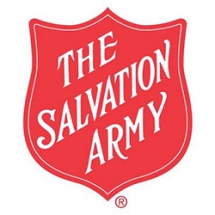According to a just-released update of the Human Needs Index (HNI), the level of American need rose in 2015 by 15 percent and reversed the trend in improvements seen from 2012 until 2014. The HNI, created by The Salvation Army in partnership with the Indiana University Lilly Family School of Philanthropy, is a multidimensional measure of human needs based on objective monthly service data compiled by the national nonprofit.
The scale of the HNI begins at 0 – indicating a minimum level of need. In the past decade, the HNI reached its highest level in 2012 (3.00) and began to trend downward in 2013 (2.57) and 2014 (1.97) before an increase of need in 2015 (2.28).
The 10 states with the highest Human Needs Index values in 2015 are North Dakota (3.80), Nevada (3.51), Pennsylvania (2.27), Massachusetts (2.25), Colorado (2.13), Arkansas (1.92), Kansas (1.78), Alaska (1.68), District of Columbia (1.68) and Michigan (1.57). Indiana, Wisconsin, and Nebraska dropped out of the top 10 in 2015, but remain higher than the mean for all states.
The HNI tracks changing levels of need for basic assistance including meals, groceries, clothing, and furniture, as well as help paying for housing (mortgage/rent assistance), medical/prescription expenses, and energy bills.
“The increased need in 2015 likely is due at least in part to the fact that a number of economic indicators grew more slowly in 2015 than in 2014,” said Una Osili, Ph.D., director of research for the Lilly Family School of Philanthropy.
“The 2015 Human Needs Index value is similar to values seen prior to 2014, making clear that significant pockets of need remain in many places in the U.S. since the Great Recession.”
While the HNI demonstrates an overall national increase in need in 2015 compared to 2014, a closer look at the data reveals:
- Arkansas (+181.6%), Alabama (+126.8 percent), Colorado (+104.4 percent), South Carolina (+96.6 percent), and West Virginia (+95.5 percent) showed the greatest increases in need
- Clothing (+47 percent) and furniture (+35 percent) were the need categories showing the greatest per capita increase
“The Index shows a reality that is different than what people might assume from seeing positive reports like increases in employment and minimum wage,” said Lt. Col. Ron Busroe, National Community Relations and Development Secretary with The Salvation Army. “While those are positive developments, we cannot forget that a significant part of the population can’t make ends meet and is experiencing real need.”
Americans believe more or the same number of people are living in poverty
To compare and contrast the reality of need as illustrated by the HNI with public opinion, The Salvation Army also commissioned an online poll titled Perceptions of Poverty. The poll was conducted by Research Now, a global leader in data collection, and canvassed 1,226 people in every region and state in the country with a +/- 3 percent margin of error.
Results from the poll include the following:
- More than three quarters (76.6 percent) of Americans believe there are more or the same of number of people living in poverty in their state versus four years ago (eight out of 10 Midwestern respondents agreed with this statement)
- More than half (55.2 percent) of Americans personally know someone they consider to be poor or living in poverty (more than six out of 10 Midwestern respondents agreed with this statement)
- Four out of 10 (39.9 percent) Americans believe that families remain in poverty for multiple generations, while a quarter of Americans (25 percent) feel poverty is due to laziness or a lack of work ethic
- Almost nine out of 10 (89.5 percent) Americans believe it is difficult or somewhat difficult to escape poverty
- Approximately eight of out of 10 (79.3 percent) Americans believe candidates running for U.S. president should be discussing specific plans to combat poverty
- Nearly two-thirds (64.2 percent) of Americans believe that the government or elected officials should be responsible for helping people living in poverty, while almost one out of five (17.3 percent) believe self determination is the most important thing for people struggling with poverty
>> Results from the Perceptions of Poverty poll
About The Salvation Army
The Salvation Army, established in London in 1865, has been supporting those in need in His name without discrimination for more than 130 years in the United States. Approximately 30 million Americans receive assistance from The Salvation Army each year through a range of social services: food for the hungry, relief for disaster victims, assistance for the disabled, outreach to the elderly and ill, clothing and shelter to the homeless, and opportunities for underprivileged children. Eighty-two cents of every dollar donated to The Salvation Army is used to support those services in 5,000 communities nationwide. The Salvation Army tracks the level of need across the country with the Human Needs Index. For more information follow on Twitter.
About the Lilly Family School of Philanthropy
The Indiana University Lilly Family School of Philanthropy is dedicated to improving philanthropy to improve the world by training and empowering students and professionals to be innovators and leaders who create positive and lasting change. The school offers a comprehensive approach to philanthropy through its academic, research and international programs and through The Fund Raising School, Lake Institute on Faith & Giving and the Women’s Philanthropy Institute. Follow us on Twitter and “Like” us on Facebook.
About Research Now
Research Now Group, Inc., is the global leader in digital data collection to power analytics and insights. It enables data-driven decision making for its 3,000 market research, consulting, media, and corporate clients through its permission-based access to millions of deeply-profiled consumers using online, mobile, social media and behavioral data collection technology platforms. The company operates in more than 35 countries, from 23 offices around the globe, and is recognized as the quality, scale and customer satisfaction leader in its industry.


